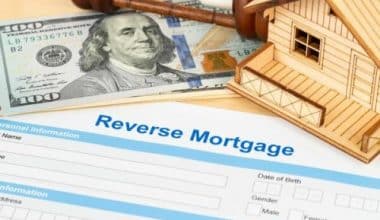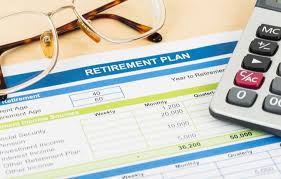A self-directed 401k is a private pension plan that your company sponsors. As a result, this account type is often known as a self-employed 401k. It is an IRS-approved qualified retirement plan. The self directed 401k is subject to the same rules and regulations as any other 401k plan. These rules were first put in place in 1981. The EGTRRA law was passed in 2001. This is widely known as one of the two “Bush Tax Cuts.” This act significantly altered the IRS rules, cutting taxes for qualifying plans such as a personal 401k. Here is all you need to know about self directed 401k and other solo plans.
What Is A Self-Directed 401K?
A Self-Directed 401K, also known as an Individual 401K, Solo 401K, Self-Employed 401K, or SoloK, is a retirement account that is expressly designed to support firms that employ only the owner, their spouse, and company partners.
Corporations, incorporated and unincorporated enterprises, partnerships, and sole proprietorships are eligible for self-directed 401Ks. The only requirement for qualifying contributions to a Solo 401K is that the contributor be paid a salary or wage.
The business may also have no further workers or employees other than the plan holder’s spouse or the business’s partners.
How Does a Self-Directed 401(k) Work?
There are two sorts of Self-Directed 401(k) plans: those with limited control and those with complete control. Some financial organizations will help you set up a new self-directed 401(k) plan. But take note: you will only be able to invest in the things they represent.
If you have a checkbook-controlled self-directed 401(k) (like the one we set up), the entire alternative investment world is waiting for you. You can, of course, invest in “traditional” investment instruments such as stocks, bonds, and mutual funds. You can, however, invest in alternative assets such as real estate, private placements, or small businesses. You’re free to spend your money however you see appropriate. This is a step-by-step explanation of how self-directed 401(k)s work:
- Entity: If you do not already have an entity in the form of an LLC, sole proprietorship, or C-Corp, SD Retirement Plans may assist you with forming the right entity in the state of your choice.
- Documentation: You will draft and file the plan documentation with the IRS.
- Contributions: You have the option of rolling over your IRA or solo 401(k) to a self-directed 402(k) or simply making a conventional IRA/401K contribution.
- Invest: You can invest in alternative assets such as real estate, small businesses, or private placements.
How to Create a Self-Directed 401k Plans
You must have earned taxable compensation during the current fiscal year to be eligible to open a self-directed 401(k). Employers may offer self-directed 401k plans in addition to regular 401k plans. In this case, the plan administrator would also handle a self-directed 401k.
There are three primary strategies to fund your self-directed 401k:
- Transfers include monies from previous 401(k)s, SEP-IRAs, SIMPLE IRAs, and regular IRAs; Roth IRAs cannot be transferred.
- Profit sharing entails obtaining a direct share of profits, which can amount to up to 25% of the sponsoring entity’s profit.
- Contributions are made by postponing income into the account.
Notably, the contribution limits for self-directed 401k plans are the same as those for standard 401k plans. The cap for 2022 is $20,500. The catch-up contribution maximum is an additional $6,500 for anybody over the age of 50, increasing the total contribution limit to $27,000 in 2022.
Self-Directed 401k Plan Rules
Self-directed 401k plans are subject to the same rules and regulations as regular 401(k) plans. If your workplace offers self-directed 401k plans, be sure you understand the IRS rules before making account contributions.
#1. Contribution limitations per year
The maximum amount you can have withdrawn from your taxable income and placed in your 401(k) account through elective deferrals is $19,500 in 2021 and $20,500 in 2022. For inflation, the cap is raised on a regular basis. If you are 50 or older at the end of the year, you can make up to $6,500 in extra elective deferrals for both 2021 and 2022.
Your employer may also contribute on your behalf up to a maximum contribution limit of $58,000 in 2021 and $61,000 in 2022. The maximum ceiling, including employer payments, for individuals under 50 and eligible for catch-up contributions is $64,500 in 2021, or $67,500 in 2022 for those 50 and older.
If you only work for one firm during the year, you shouldn’t have to worry about exceeding the 401(k) plan limit because your employer calculates it for you. However, if you work for more than one company, it is simple to exceed the cap because one employer is unaware of how much another has previously allowed you to contribute.
If you overcontribute to your 401k, you must contact your plan administrator and have the excess contribution returned to you before the next year’s tax deadline. Otherwise, the extra contribution has no effect on your taxable income and must be taxed when you withdraw it. As a result, the same income is taxed twice. If you leave excess deferrals in your account, the IRS may reject your plan.
#2. Ineligible investments
If your workplace offers a self-directed 401(k) plan, don’t interpret the term “self-directed” too literally. Your company can still impose restrictions on the types of investments you can make. Some employers, for example, may limit you to mutual funds.
You will also not get away with investing in anything that may provide an immediate benefit. You cannot, for example, utilize your 401(k) to purchase a residential residence. And forget about using your 401(k) to buy rare cars, art, or vacation homes that you intend to utilize. You can’t even pay yourself to handle your own 401(k) plan investments.
However, if your company permits it, you may invest in stocks, investment real estate, gold, cash, and other assets.
#3. Transactions involving relatives
Keep your 401(k) plan separate from your family members. “Family members” are defined as your parents, grandparents, children, grandchildren, or your spouse’s children or grandchildren.
This implies you can’t lend your 401(k) funds to any of these relatives, let them live in property held by your 401(k), invest in your relatives’ enterprises, or otherwise benefit from your 401(k) assets.
#4. Distributions
The distribution rules for a self-directed 401k plan are the same as those for any other 401(k) plan. If you take an early withdrawal before the age of 59 1/2, you may be subject to a 10% penalty in addition to ordinary income tax, unless you meet an exception.
When you have sudden and serious financial demands, your employer’s 401(k) plan may allow for hardship withdrawals.
If you leave your work, you can transfer your self-directed 401(k) plan to another qualified retirement plan or IRA just like any other 401(k) plan. The transaction should not be taxable as long as you shift your money into another tax-advantaged account.
It’s your money, therefore you should be able to buy and sell investments whenever you want, taking risks and reaping benefits. You can do so if your employer offers a self-directed 401(k) plan.
Rollovers and Withdrawals from Self-Directed 401(k) Plans
The withdrawal and rollover rules for self-directed 401k plans are the same as for standard 401(k) plans or IRAs. If you withdraw from a self-directed 401(k) before the age of 59 1/2, you will suffer a 10% penalty unless you qualify for an exemption.
If you want to rollover a self-directed 401(k) to an IRA, you have 60 days to do so before the money in your 401(k) becomes a taxable withdrawal. Inquire with the brokerage firm that holds your IRA about making a direct, tax-free, and penalty-free rollover. If you want complete control over your assets, you may consider rolling over to a self-directed IRA.
The Benefits of a Self-Directed 401k Plans
- Contributions to these plans, as well as investment returns and earnings, are tax-deferred until withdrawal, and your sponsoring company may also benefit tax-wise.
- You can choose to make voluntary discretionary contributions from your salary, or your employer can do so on your behalf.
- You can defer up to $20,500 or all of your earnings yearly (whichever is less) in tax year 2022, with catch-up contribution limitations of $6,500 once you reach the age of 50.
- You’ll be able to retain greater control over investments and can invest your assets in any of the possibilities provided by the plan.
- Mutual funds, individual equities and bonds, exchange-traded funds (ETFs), and non-traditional investments such as real estate are all available through self-directed 401k plans.
- You can include real estate and other non-traditional investments in your portfolios with a self-directed 401k. This can provide outstanding profit potential that regular 401(k) participants do not have.
- If you are an experienced investor, you can put your knowledge to the test, which is not possible with a standard 401(k) plan.
- The abundance of investment options allows you to be selective in your decision process, allowing you to make quality investments.
- If you are the type of investor who can remain calm during market turbulence, you can take advantage of the opportunities presented by a self-directed 401(k). This gives you an advantage over mutual funds managed by others.
What is the Difference Between a Self-directed 401k and a Self-directed IRA?
Self-directed 401(k)s and self-directed individual retirement accounts (IRAs) are both tax-advantaged retirement savings accounts that allow investors to select and actively manage a diverse range of investments from asset classes that are typically unavailable to those investing in retirement accounts. Money grows tax-free in both types of accounts until retirement.
The primary distinction between the two accounts is that a self-directed 401k is an account sponsored by an employer, but a self-directed IRA is an account established by the plan holder on their own.
A self-directed 401k allows the account holder to contribute to the account with pre-tax income deducted from their paycheck. These funds then grow tax-deferred until retirement, at which point they can be taken and taxed. This frequently permits workers to save more for retirement during years when their marginal tax rate is high. Because they are likely to be in a different income bracket in retirement, their withdrawals are often taxed at a significantly lower marginal tax rate when they retire. Solo 401ks are solo 401k accounts meant for business owners who do not have any workers.
A self-directed IRA allows the investor to start an account as either a standard IRA or a Roth IRA. The account holder contributes income after it has been taxed to a traditional IRA. However, they can claim their IRA contributions on their tax return to receive a tax refund. Their savings, like a 401k, grow tax-free until retirement and are taxed when withdrawn. Contributions to a Roth IRA are made after-tax, grow tax-free, and can be withdrawn tax-free in retirement.
How to Manage Your Own 401k or IRA
Do you want to administer your own 401k or IRA? Here are some pointers to help you succeed:
Step #1: Establish Contribution Limits
The first step in maintaining a self-directed retirement account is to verify that contribution limitations are adhered to. Investors can contribute up to $19,500 to their IRA or 401k plans in 2022. They are also eligible for catch-up payments of up to $6,500 per year if they are 50 or older.
Step #2: Balance and diversify your assets.
Investors with self-directed retirement plans have the choice to select their asset mix and investments, but that freedom comes with the duty to diversify and balance their investments to avoid overexposure to any industry. That entails devising an investing strategy that guarantees their assets are invested in a variety of industries and investments that are appropriate for their risk tolerance. It is also critical to rebalance the account on a quarterly basis.
Step #3: Enlist the Assistance of a Professional Advisor
A plan trustee or custodian is not permitted to provide investing advice to self-directed account holders, but this does not preclude them from seeking professional assistance. Self-directed investors can hire a financial advisor to help them decide how to invest their money.
Step #4: Lending Options from a 401k or IRA
Regular IRAs cannot be used to make loans, however self-directed IRAs and 401ks may allow investors to make loans to certain qualified individuals, such as the investor, their spouse, children, or parents. Loans can be made to invest in real estate, land, or small businesses, among other things. However, simply because the rule exists does not imply that investors should follow it. Before lending money from a self-directed account, investors should do their homework; making the incorrect decision could result in the IRS becoming involved and the investor losing the tax benefits on their account.
Step #5: Consider establishing a Self-Directed 401k.
Self-directed 401k investors can set up a Solo 401k LLC to manage their retirement assets. Essentially, an investor forms an LLC that is owned by their IRA or 401k. The investor does not control the LLC.
Existing retirement accounts can also be transferred to the self-directed LLC. Why would investors do such a thing? It enables them to make contributions of $54,000 or more without the need for a custodian or trustee. This implies that investors do not have to pay fees or adhere to institutionally imposed restrictions on the types of assets they can invest in through their retirement accounts.
Can I Go from a Managed to a Self-Directed 401(K)?
You may transfer funds from your employer’s plan into a different account of your choice, such as a Self-Directed IRA, if you have already contributed to it while still an active employee.
Can My 401(K) Be Transferred to My Bank?
You can move money from a 401(k) to your bank account after turning 59 12 without incurring the 10% penalty. You must still pay income taxes on the amount you withdrew, though. If you’ve already retired, you can choose to get regular deposits into your bank account to aid with living expenses.
Can I Halt My 401(K) And Retrieve My Money?
You can take the money out of your account if you quit your job or get fired, but there are consequences for doing so that should make you think twice. The money will be subject to ordinary income tax and a 10% early withdrawal penalty.
Is My 401(K) Fully Withdrawable?
Yes. In retirement, you can only take out what you need to survive and leave the remainder invested.
Is It Possible to Have a 401K without a Social?
For a retirement account, you’ll need an SSN or ITIN so that the IRS can be informed of your interest, dividends, and gains. You may apply for either one or both, but only if you can provide immigration paperwork attesting to your legal right to reside and earn a living in the United States.
Conclusion
Self-directed 401ks and IRAs are retirement investment choices that are especially appealing to knowledgeable investors who want more control over their retirement funds and more options for the types of assets they can invest in. They do, however, necessitate more labor and more cautious risk management.
Self Directed 401k FAQs
How much can you put in a self-directed 401k?
In 2022, the total solo self directed 401k contribution limit is $61,000. For individuals aged 50 and up, there is an additional $6,500 catch-up payment.
How is a self-directed 401k taxed?
Self directed 401k contributions are tax-deferred, which means that taxes are not due until the funds are withdrawn from the account.
Can you do a 401k by yourself?
You can start a self directed 401k plan for yourself as a solo participant if you are self-employed. In this case, you are both the employee and the employer, which means you can contribute more to your 401(k) because you are the employer match!






